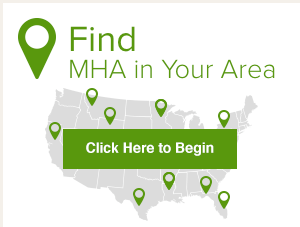You are here
New MHA Report Shows Many in Crisis, Trauma in Youth Having Lasting Impact in Schools and Beyond
Alexandria, VA – For the fifth year in a row, Mental Health America (MHA) released its annual State of Mental Health Report, which ranks all 50 states and the District of Columbia based on several mental health and access measures. This year, Minnesota came out on top overall with Nevada coming in 51st. The report also dives into addressing trauma in youth, and its long-term impact on performance and behavior in school.
In developing the report, MHA looked at 15 different measures to determine the rankings. MHA hopes to provide a snapshot of mental health status among youth and adults for policy and program planning, analysis, and evaluation; to track changes in prevalence of mental health issues and access to mental health care; to understand how changes in national data reflect the impact of legislation and policies; and to increase the dialogues and improve outcomes for individuals and families with mental health needs.
While much of the state of our mental health care continues to be broken, there are glimmers of hope. Since the release of its first report, MHA is seeing small yet encouraging decreases in the number of American adults who have mental health concerns (from 18.19% to 18.07%) and substance use problems (from 8.76% to 7.93%). Yet overall, the picture is still quite bleak.
“Sadly, our report shows that there have been alarming increases in adult suicidal thoughts and major depression in youth,” said Paul Gionfriddo, president and CEO, Mental Health America. “Despite mental health being something that more and more people are talking about - far too many people are still suffering. People are simply not receiving the treatment they need to live healthy and productive lives - and too many don’t see a way out.”
The estimated number of adults with serious suicidal thoughts is over 9.8 million – an increase of 200,000 people since last year. Over 2 million young people cope with severe major depression. And that is just the population that has been diagnosed. On average, it takes 10 years between the onset of symptoms and when individuals receive treatment. Over 24 million individuals experiencing a mental health illness are going untreated.
MHA’s report also shines the spotlight on childhood trauma and its impact long-term, and releases data that shows how much trauma can impact youth in school. Trauma-impacted youth are more likely to be absent from school, find themselves removed from classrooms, or struggle with academics. As part of MHA’s Online Screening Program, in 2015 MHA offered an anonymous youth screen, the Pediatric Symptoms Checklist (PSC).
Since the PSC has been offered, 116,683 youth have been screened and 569 self-selected to identify themselves as trauma survivors. Of those who self-described:
- 67% of screeners stated they often have trouble concentrating in school.
- 73% reported the often felt sad or unhappy, with 64% reporting they often felt hopeless.
- 58% stated they had experienced trouble with their teachers, and the same percentage reported they had engaged in fights with other children.
- 66% reported they often felt irritable or angry.
- Of those who identified as trauma survivors, 94% also scored positive for PTSD; 68% screened positive for Severe Depression; 96% screened at-risk for psychosis, and 63% screened positive for Bipolar.
- 43% of youth who identified as trauma survivors were not receiving mental health treatment or support, with 40% stating they had never received any mental health treatment or support.
MHA strongly supports integrating mental health services into the education system. Mental health interventions have show to shorten episodes of mental health conditions and prevent the development of more severe conditions, and schools can play a critical part by implementing trauma-informed programs that have been shown to help students who have been impacted by trauma.
“Our children are crying out for help,” concluded Gionfriddo. “We must continue to improve access to care and treatments, and we need to put a premium on early identification and early intervention for everyone with mental health concerns. We must address these mental health concerns before crisis and tragedy strikes—before Stage 4.”







this page